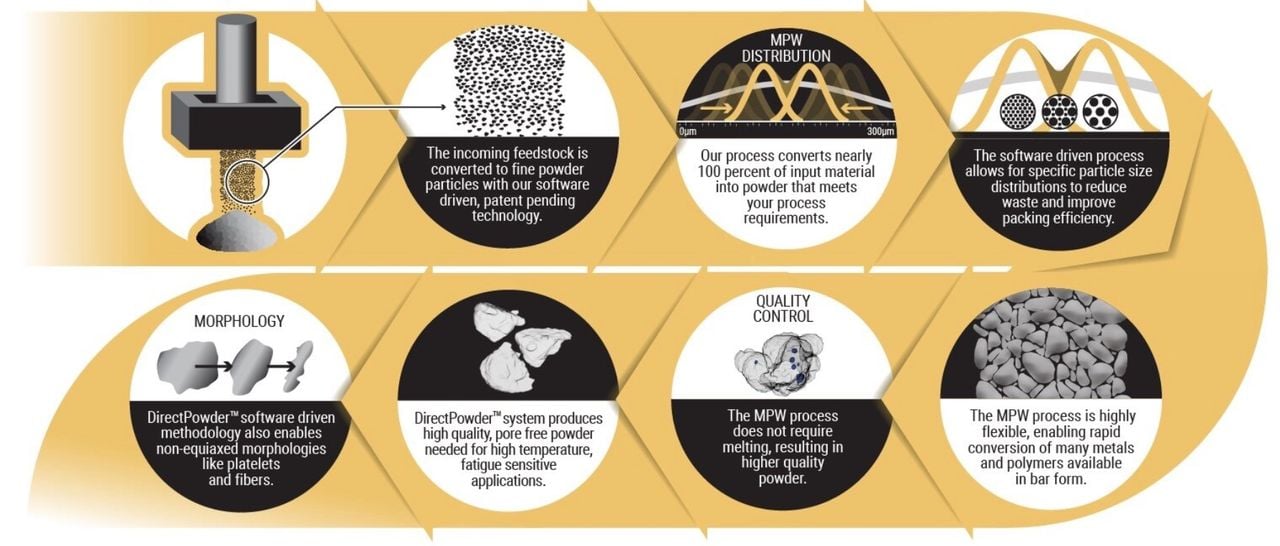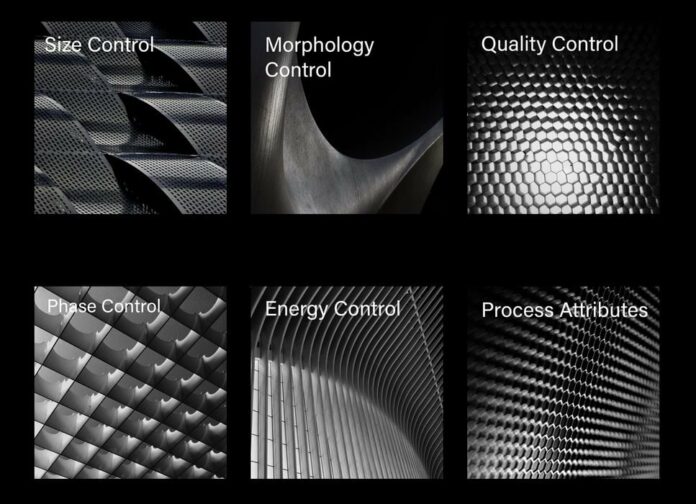Before 6K Additive, I didn’t have a particular interest in the way metal powders were produced. 6K Additive came onto the market with something eye-catching: a proprietary technology that could produce more “eco-friendly” materials…Add to that the LCA results that aimed to demonstrate how sustainable their microwave technology (UniMelt) is and our willingness to highlight such data, the die was cast.
That being said, in general, Gas Atomization (GA) or Plasma Atomization (PA) are the most widely-used methods for the production of metallic powders. Besides the feed material, another major difference between plasma atomization and gas atomization is that in PA, wire is melted and atomized by extremely high-temperature plasma simultaneously, whereas in GA, metal is melted by an induction coil or other source and then atomized by cold high-pressure gas.
Unfortunately, as we were explained in an interview with 6K Additive, “GA and PA produce anywhere from 20% to 30% of the desired particle size distribution (PSD) for LPBF. The remaining 70% becomes scrap and often is sent to landfill”. At least, these were the thoughts of Dr Aaron Bent. According to other experts – Martin McMahon especially, an Additive Manufacturing Consultant who co-wrote the must-have technical features in an automated powder removal system -, “if only 20-30% atomisation yield, they must be very poorly established processes. Typical target yields for the 15um 63um range, from which most powder are selected for LPBF, can be well in excess of 50% for an optimised process. Furthermore, if powders used for AM are sized from larger production batches, which could be for MIM or other industrial uses of metal powders, then the waste can be very low indeed. Significant quantities can be fed back into the melt of subsequent production batches too if it is stored and handled appropriately.“
That being said, 6K Additive claims they can control the size of the input feedstock with their UniMelt system, and “get near 100% of the desired PSD, so all of the material in the case of LBPF as an example becomes usable powder”. Add to it that UniMelt plasma would use a third of the gas during production in comparison to GA or PA, UniMelt would be much more sustainable with respect to its carbon footprint.
Another method that may position itself as a competitor to 6K Additive is Metal Powder Works’ DirectPowder Process. This technology would grind metal to produce powder mechanically. Interestingly, Metal Powder Works (MPW) could control both the size of the particles and the geometry thanks to a “software-defined process” that could create a “wide range of pre-defined part shapes” – ideal for AM, right?
 In an interview given to software company AMFG, John Barnes, cofounder and CEO of Metal Powder Works explains that in one study, they supplied 2 batches of powder, 12 months apart off two different machines and the average particle size was only 3 microns different. “When you reduce the variability of the feedstock in this way, inherently you start to reduce the variability of everything else. If you don’t, it’s really hard to hammer it out elsewhere in the process”, Barnes adds.
In an interview given to software company AMFG, John Barnes, cofounder and CEO of Metal Powder Works explains that in one study, they supplied 2 batches of powder, 12 months apart off two different machines and the average particle size was only 3 microns different. “When you reduce the variability of the feedstock in this way, inherently you start to reduce the variability of everything else. If you don’t, it’s really hard to hammer it out elsewhere in the process”, Barnes adds.
If we just look at the fact that aircraft’s components may require various types of aluminum and titanium alloys, one realizes that there is a necessity to optimize each material for specific purposes. With AM that can allow the production of complex parts, this process – if it works well -, could help produce materials in the wide range of peculiarities required.
With 075-T6 Aluminum, 6061-T6 Aluminium, and C14500-H02 Copper already in their portfolio, the next step we look forward to seeing, is probably the production of harder metals.
Disclaimer: This article has been updated to reflect the thoughts of Martin McMahon on the metal powders production. McMahon and Bent’s insights do not reflect the editor’s opinion.
Remember, you can post jobopportunities in the AM Industry on 3D ADEPT Media free of charge or look for a job via our job board. Make sure to follow us on our social networks and subscribe to our weekly newsletter : Facebook, Twitter, LinkedIn & Instagram ! If you want to be featured in the next issue of our digital magazine or if you hear a story that needs to be heard, make sure to send it to contact@3dadept.com






